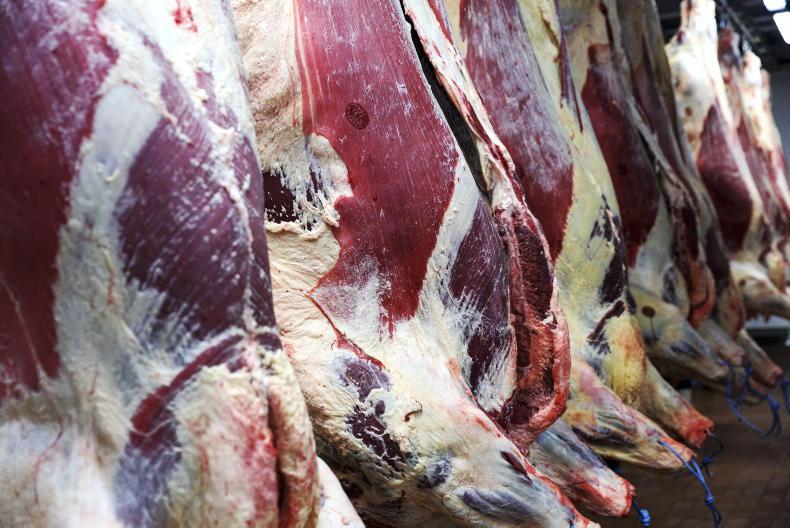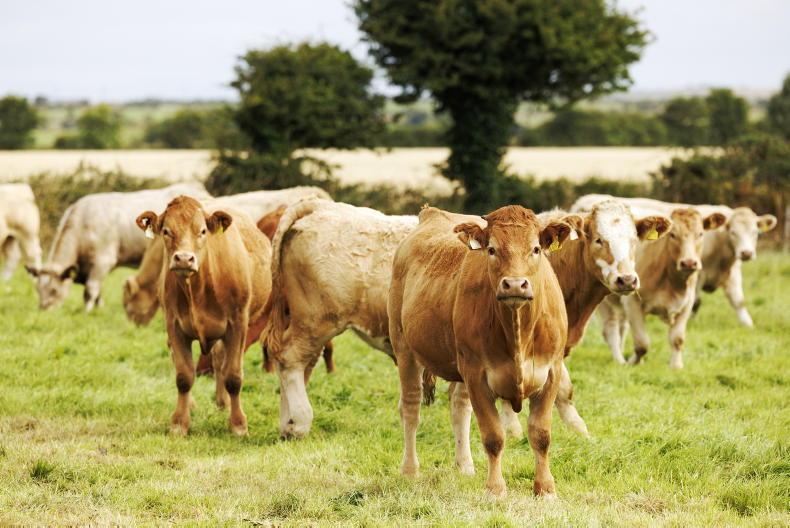This week we publish the Irish Farmers Journal factory price leagues for 2021. The purpose of the exercise is to give farmers an insight into which factories are returning the best price for the type of animals they sell.
Over the years, we have seen the differential in the price paid for animals of the same grade increase significantly.
This reflects the extent to which processors are becoming more focused in sourcing animals best suited to the specialised markets they are servicing, alongside significant growth in breed-based bonuses, particularly in the case of Aberdeen Angus.
Ten years ago, the price differential between the top- and bottom-paying factory for R-grading steers was typically 8c/kg, or the equivalent of just €29 on a 360kg carcase. As Phelim O’Neill reports this week, the differential for R-grading steers in 2021 was 22c/kg – the equivalent of €80 per head.
Price gaps
A similar trend is also evident for heifers. The price differential between the top- and bottom-paying factories for R-grading carcases has increased to almost 30c/kg or €90 per head on a 300kg carcase.
A similar differential in price per kg is evident in young bulls.
We have also seen a significant change in the positioning of ABP, Dawn and Kepak within the leagues.
When we started this exercise, ABP factories tended to prop up the bottom of the league tables for prime cattle. However, in 2021, the ABP factories combined led the market for prime steers while also preforming strongly for young bulls and heifers.
Privately owned beef processors are providing greater transparency on the price paid to farmers than farmer-owned dairy co-ops
In contrast, many of the independent factories that once topped the prime market are now falling behind the larger groups – the only exception being Foyle Meats and Jennings in Ballinrobe. Jennings’ strong relationship with Dunnes Stores and its concentrated focus on Aberdeen Angus has seen it consistently dominate the market for butcher-type heifers and steers for almost two decades.
Farmgate transparency
The ability to produce the factory price leagues is due to a requirement for processors to report to the Department of Agriculture on a weekly basis the price per kilo paid to farmers for each individual grade of animal.
The agreement was secured by the IFA during the beef blockades in January 2000. While the issue of market price transparency has yet to be resolved, securing transparency around farmgate prices has certainly helped give farmers a much better sense as to the value of their animals when selling over the last 20 years.
The extent to which beef farmers fought to force meat processors to provide this level of farmgate transparency serves to raise further question marks as to why dairy farmers now seem content to hand it away.
Dairy reluctance
In recent years, we have seen some dairy co-ops vote not to take part in the KPMG milk price reporting tool that reflects the true annual payout that is comparable and fair between co-ops.
The only intention with this exercise is to provide fairness and transparency between milk price payout and to bring clarity for dairy farmers. Unless we compare apples to apples, there is no point in making comparisons.
We are working hard to re-engage with the co-ops to reinstate this exercise in the best interests of all milk suppliers. It would be a shame as Glanbia votes to return to a 100% farmer-owned structure, and as Kerry farmers discuss similar options, that no independently reviewed milk price reporting mechanism would be available.
Record price differential
The reduced transparency comes at a time when, as Jack Kennedy reports, the Ornua PPI, a market price transparency tool of which beef farmers are envious, shows a record price differential equivalent to €128 per cow between what the dairy market returned in 2021 compared to what co-ops returned to their farmer suppliers. It once again raises questions as to what extent co-ops are really adding value to products traded outside of Ornua.
Did we ever imagine that a scenario would emerge where privately owned beef processors are providing greater transparency on the price paid to farmers than farmer-owned co-ops are prepared to provide milk suppliers?
The argument for the establishment of a Food Ombudsman to deliver increased price transparency within the supply chain is certainly weakened when farmers themselves are voting within co-op boardrooms for less price transparency.
If not reversed, then the power should be given to the Department of Agriculture to access and publish this information in the same way it does for beef processors.










SHARING OPTIONS